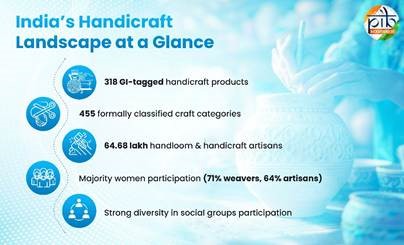Description
Copyright infringement not intended
Picture Courtesy: Investopedia
Context:
The economics of “trickle-down growth” suggests that rapid economic growth automatically brings benefits to all sections of society, including the most vulnerable and deprived groups.
What is Trickle-down Economics?
Trickle-down economics is an economic theory that suggests benefits given to the wealthy or businesses will eventually “trickle down” to the rest of society through investment, job creation, and economic growth. If the government cuts taxes for high-income earners and large corporations or offers them financial incentives, they will: Invest more in businesses, factories, and startups and create more jobs.
Current Status of Trickle-down Economics:
- The top 1% of Indians now capture a very large share of national income and wealth — for example, estimates say they get ~22.6% of income. (Source: Down to Earth)
- The bottom 50% of people have only a small share of income (about 15%) even as the economy grows. (Source: Down to Earth)
- India’s growth increasingly favours sectors that are capital-intensive (heavy industry, automation, tech) and less dependent on large numbers of low-skilled workers. (Source: Scroll.in)
- Corporate tax cuts, incentives to large firms, and infrastructure investment are more visible than improvements in incomes or quality of life for lower-income or marginalized groups. (Source: The Indian Express).
- There is concern that direct taxes on the rich or estate taxes are weak or underused; indirect taxes (GST, etc.) form a large part of revenue, which tends to be regressive. (Source: Medium).
Difference between trickle-down and inclusive growth:
|
Basis
|
Trickle-Down Economics
|
Inclusive Growth
|
|
Concept
|
Economic benefits given to the rich and businesses will eventually “trickle down” to the poor.
|
Growth that ensures equal opportunities and benefits for all sections of society.
|
|
Approach
|
Top-down – focuses on promoting business, investment, and high-income groups first.
|
Bottom-up – focuses on empowering the poor and marginalized directly.
|
|
Policy Focus
|
Tax cuts, deregulation, corporate incentives, and market-led growth.
|
Welfare schemes, skill development, education, healthcare, and rural development.
|
|
Objective
|
To stimulate economic growth through private sector investment.
|
To achieve both economic growth and social equity.
|
|
Role of Government
|
Minimal intervention; relies on market forces.
|
Active role in redistribution and welfare programs.
|
|
Impact on Inequality
|
Often increases income inequality.
|
Aims to reduce inequality and ensure fair distribution of growth benefits.
|
|
Examples (India)
|
Corporate tax cuts, FDI liberalization, PLI schemes.
|
MGNREGA, PM-KISAN, Ayushman Bharat, Digital India.
|
|
Outcome
|
High GDP growth but uneven wealth distribution.
|
Balanced and sustainable growth benefiting all.
|
Impact of trickle-down economics:
Positive Impacts
- Encourages Investment and Business Growth: Tax cuts and incentives can motivate companies to expand production, hire more workers, and invest in infrastructure. For e,g. In India, the 2019 corporate tax cut (from 30% to 22%) aimed to attract investment and boost manufacturing under Make in India.
- Short-Term GDP Boost: Lower taxes may stimulate growth and bring in capital, especially in emerging economies. The top earners and firms have more disposable income, which can increase aggregate output.
- Improves Ease of Doing Business: Reduced regulation and lower taxes can attract foreign direct investment (FDI) and encourage private sector participation.
- Infrastructure and Technology Upgrades: Policies favoring capital investment often lead to improvements in infrastructure, digitalization, and industrial capacity — indirectly benefiting society.
Negative Impacts
- Rising Income Inequality: Wealth tends to concentrate among the rich, while benefits to the poor remain minimal. In India, the top 1% holds more than 22% of national income, while the bottom 50% earns only about 15%. (Source: Down to Earth)
- Jobless or Unequal Growth: Economic growth becomes capital-intensive, with fewer job opportunities for low-skilled workers. This leads to “jobless growth”, where GDP rises but employment stagnates. In October 2024, one source noted the youth unemployment rate among those aged 15–29 was 13.8%, significantly higher than the overall unemployment rate reported by the PLFS. (Source: WEF)
- Weakened Public Services: Lower taxes on corporations reduce government revenue, limiting spending on health, education, and welfare schemes. The poor may end up worse off if subsidies or social spending decline. The Oxfam report for 2024 noted that in India, the bottom 50% of the population pays 64% of the total Goods and Services Tax (GST), while the top 10% contribute only 4%. (Source: Oxfam Report).
- Dependence on Market Forces: Trickle-down policies rely on the assumption that businesses will reinvest profits productively — but often, profits are saved or moved abroad instead. A 2021 studycited by the Atlas of the Offshore World found that approximately 36% of all foreign profits of multinational firms were shifted to tax havens each year, representing about $1 trillion in 2021. (Source: The Atlas of the Offshore World).
Government measures to maximize the trickle-down approach:
- Corporate Tax Reduction (2019): Reduced from 30% to 22% for domestic firms to attract investment and job creation.
- Production Linked Incentive (PLI) Scheme: Incentivizes manufacturing across sectors such as electronics, pharmaceuticals, textiles, and auto components to boost domestic production and employment.
- Gati Shakti Mission: Integrates transport, logistics, and infrastructure planning for efficient connectivity.
- National Infrastructure Pipeline (NIP): ₹111 lakh crore investment plan to generate large-scale jobs and enhance productivity.
- Pradhan Mantri Jan Dhan Yojana (PMJDY): Financial inclusion through bank accounts for the poor.
- PM-KISAN Scheme: Direct income support to farmers.
- MGNREGA: Rural employment guarantee ensuring income flow to vulnerable sections.
- Direct Benefit Transfer (DBT): Reduces leakages, ensuring subsidies and benefits reach the intended beneficiaries directly.
- Mudra Yojana: Provides collateral-free loans to small entrepreneurs and MSMEs, promoting self-employment.
- PM Fasal Bima Yojana: Crop insurance against losses to protect farmer income.
- Skill India Mission: Vocational training for youth in diverse sectors.
- Inflation targeting by RBI: Keeps price levels stable, preserving purchasing power for the poor.
Way forward:
- Encourage labour-intensive sectors like textiles, food processing, construction, and tourism. Strengthen MSMEs, which employ over 11 crore people and are key to rural income generation. (Source: MSME)
- Improve education quality, vocational training, and digital literacy through Skill India and NEP 2020.
- Expand rural infrastructure (roads, storage, irrigation) under PM Gram Sadak Yojana and PM Krishi Sinchayee Yojana.
- Implement progressive taxation and reduce regressive indirect taxes (like GST on essentials).
- Continue targeted schemes like Ayushman Bharat, PMGKAY, and PM-KISAN for the most vulnerable.
- Support North-East, hill, and tribal regions with tailored incentives and infrastructure projects.
- Strengthen governance, reduce corruption, and improve delivery efficiency via digital monitoring systems.
Source: The Indian Express
|
Practice Question
Q. Discuss the relevance of trickle-down economics in India’s post-liberalization growth model. How can the government ensure that economic growth leads to inclusive development? (250 words)
|
Frequently Asked Questions (FAQs)
Trickle-down economics is an idea that benefits given to the wealthy or businesses — such as tax cuts or incentives — will eventually “trickle down” to the poor through more investments, job creation, and economic growth.
The concept became popular in the 1980s during the Reagan (USA) and Thatcher (UK) governments as part of supply-side economic policies.
- Tax cuts for the wealthy and big businesses
- Fewer government regulations
- Encouragement of private investment and entrepreneurship.











